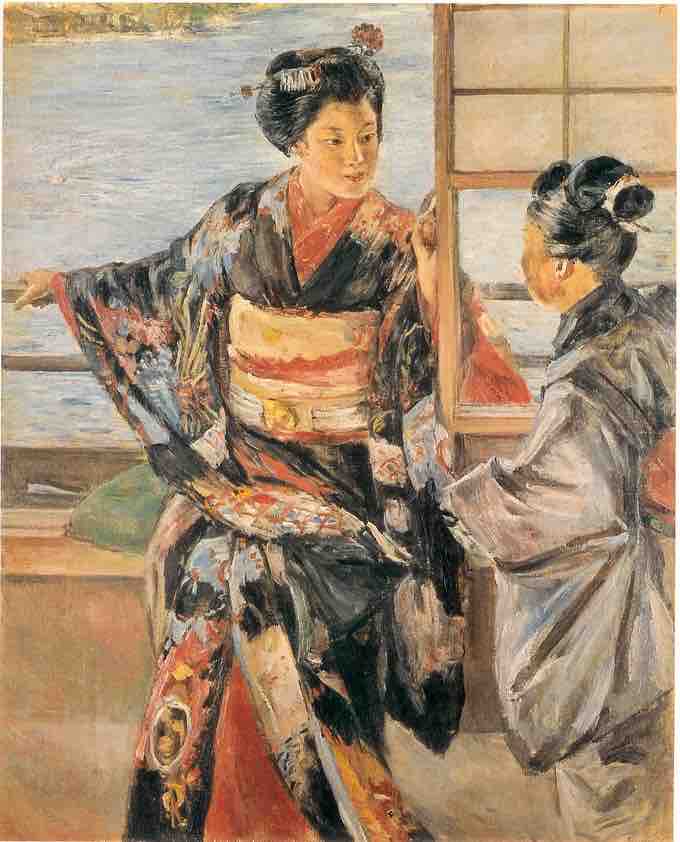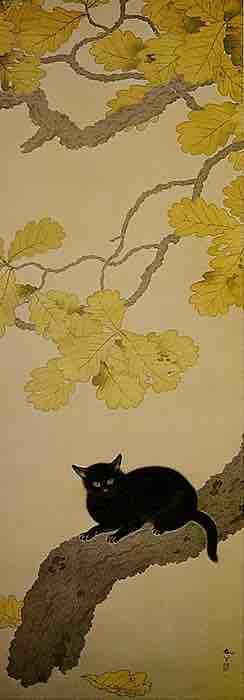Overview: The Meiji Period
The Meiji period (明 Meiji-jidai) was an era in Japanese history which extended from September 1868 through July 1912. This period represents the first half of Japan's time as an imperial power. Fundamental changes affected Japan's social structure, internal politics, economy, military, and foreign relations. Japanese society moved from being an isolated feudalism to its modern form. In art, this period was marked by the division into competing European and traditional indigenous styles. In 1907, with the establishment of the Bunten exhibition under the aegis of the Ministry of Education, both competing groups found mutual recognition and co-existence and even began the process towards mutual synthesis.
The Yōga style
During the Meiji period, Japan underwent a tremendous political and social change in the course of the Europeanization and modernization campaign organized by the Meiji government. Western style painting (Yōga) was officially promoted by the government, who sent promising young artists abroad for studies. The Yōga style painters formed the Meiji Bijutsukai (Meiji Fine Arts Society) to hold its own exhibitions and to promote a renewed interest in western art. Foreign artists were also hired to come to Japan to establish an art curriculum in Japanese schools. The Yōga, style encompassed oil painting, watercolors, pastels, ink sketches, lithography, etching, and other techniques developed in western culture.

Yōga style painting of the Meiji period by Kuroda Seiki (1893)
Yōga, in its broadest sense, encompasses oil painting, watercolors, pastels, ink sketches, lithography, etching, and other techniques developed in western culture. However, in a more limited sense, Yōga is sometimes used specifically to refer to oil painting.
The Nihonga Style
After an initial burst of western style art, however, the pendulum swung in the opposite direction. Led by art critic Okakura Kakuzo and educator Ernest Fenollosa, there was a revival of appreciation for traditional Japanese styles (Nihonga). In the 1880s, western style art was banned from official exhibitions and was severely criticized by critics. Supported by Okakura and Fenollosa, the Nihonga style evolved with influences from the European pre-Raphaelite movement and European romanticism. Paintings of this style were made in accordance with traditional Japanese artistic conventions, techniques, and materials based on traditions over a thousand years old.

Nihonga style painting: "Black Cat" (Kuroki Neko, 1910)
Nihonga style paintings were made in accordance with traditional Japanese artistic conventions, techniques, and materials. While based on traditions over a thousand years old, the term was coined in the Meiji period of the Imperial Japan to distinguish such works from Western-style paintings, or Yōga.